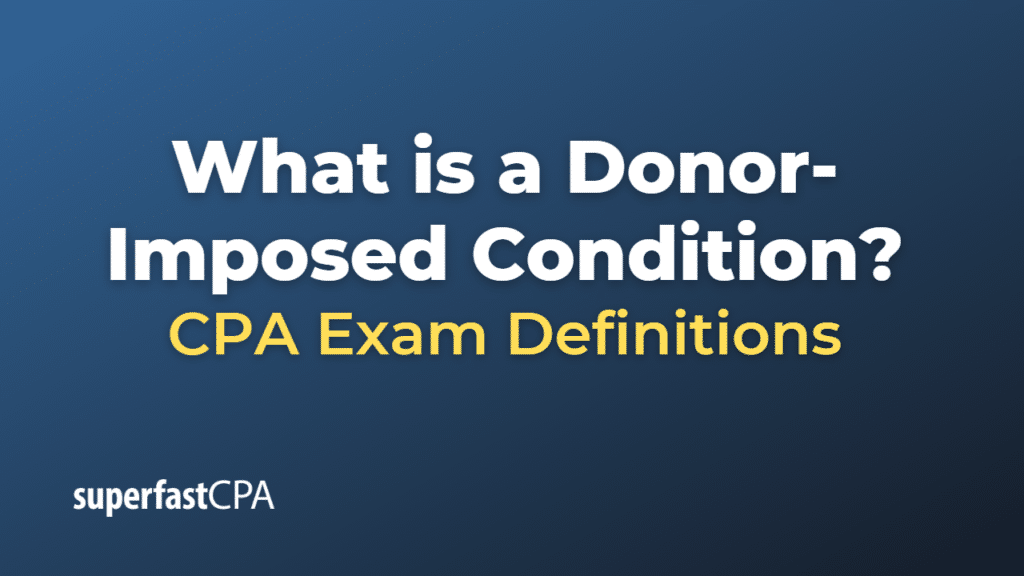Donor-Imposed Condition
A donor-imposed condition is a stipulation placed by a donor on a gift or contribution to a nonprofit organization that specifies a certain event or action must occur before the organization can have full access or use of the donated assets.
In other words, a donor-imposed condition creates a barrier that must be overcome before a nonprofit organization can recognize the gift as revenue. If the condition is not met, the donor has the right to revoke the gift or the organization is obligated to return the assets to the donor.
Examples of donor-imposed conditions may include:
- Requiring that the nonprofit organization raise a certain amount of matching funds before they can use the donation.
- Stipulating that the donation must be used for a specific purpose, such as constructing a new building or funding a particular program.
- Requiring the organization to achieve a certain outcome, such as helping a certain number of people or reaching a specific performance metric.
The concept of a donor-imposed condition is critical in nonprofit accounting, as it impacts when and how an organization can record a gift as revenue. Under accounting standards, a gift with a donor-imposed condition is not recognized as revenue until the condition has been met. Instead, it is recorded as a refundable advance, which is a liability on the organization’s balance sheet. Once the condition is satisfied, the gift is then reclassified as revenue.
Please note that the regulations around this can be complex and vary by jurisdiction, so it’s important for nonprofit organizations to work with a qualified accountant or financial advisor to properly account for gifts with donor-imposed conditions.
Example of a Donor-Imposed Condition
Suppose a generous donor gives $100,000 to a local charity for the homeless, with a condition that these funds must be used to establish a new job training program for the homeless individuals served by the charity. The donor further stipulates that the program must be launched within the next two years, or the funds must be returned.
In this case, the $100,000 is a conditional gift, as it’s contingent upon the charity meeting the specified condition of launching the job training program within two years.
Upon receiving the funds, the charity would record the $100,000 as a liability (under refundable advances) on its balance sheet, because the gift could potentially need to be returned if the condition is not met.
Then, let’s say the charity successfully launches the job training program within the specified two-year timeframe. At this point, the condition has been met, so the charity would reclassify the $100,000 from refundable advances (liability) to revenue on its financial statements.
This is a simplified example and doesn’t cover all possible scenarios or complexities that could arise with conditional gifts. It’s always a good idea for nonprofit organizations to work with a qualified accountant or financial advisor when dealing with such matters.













